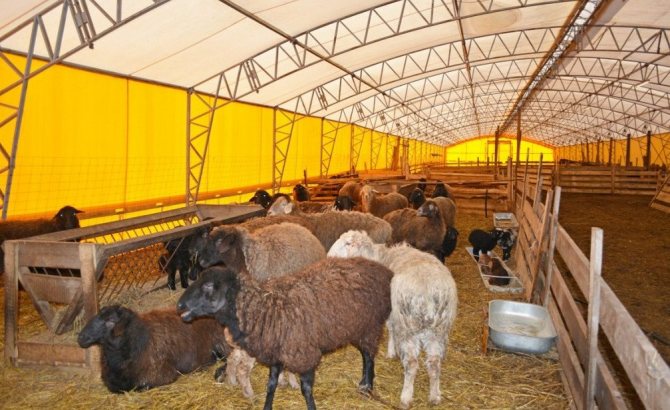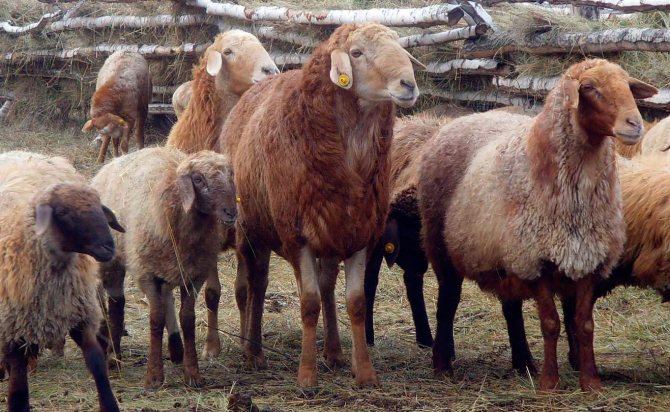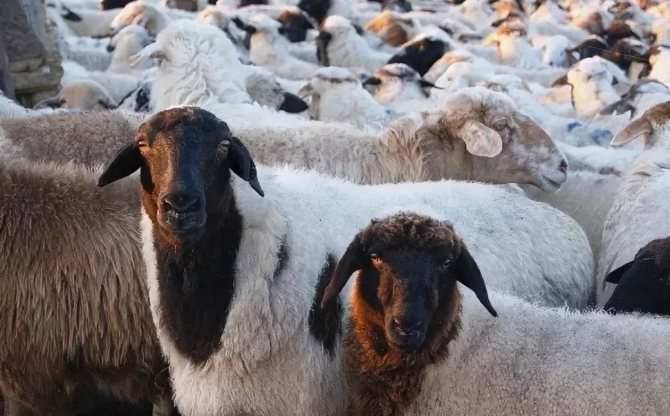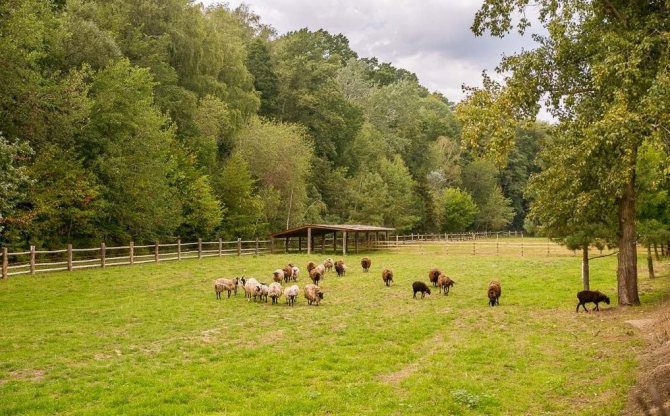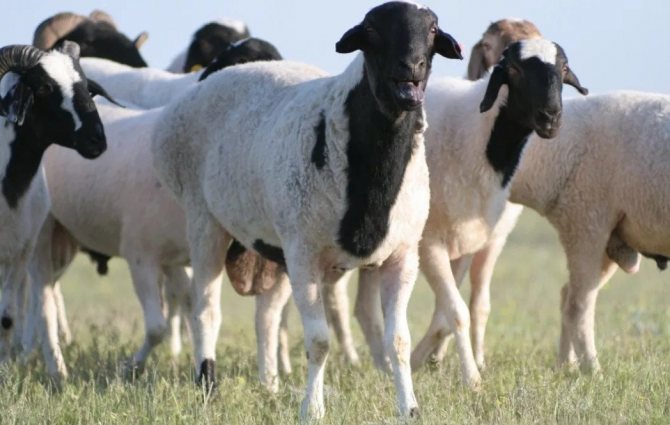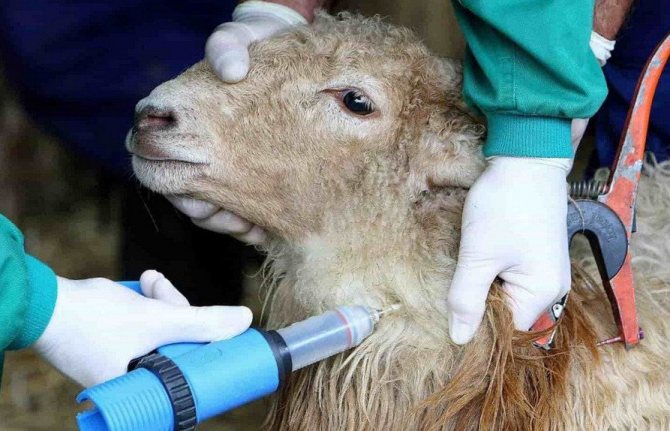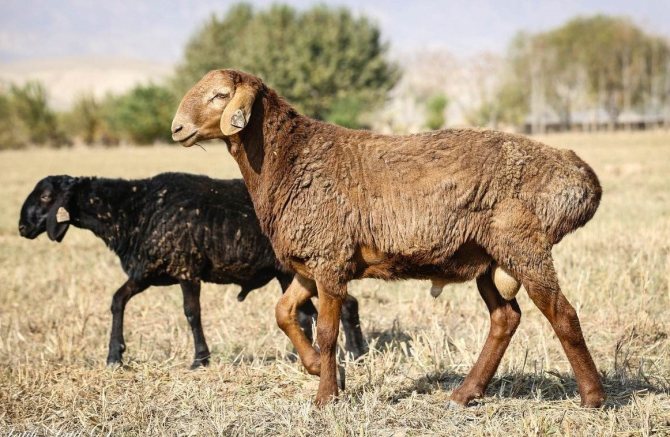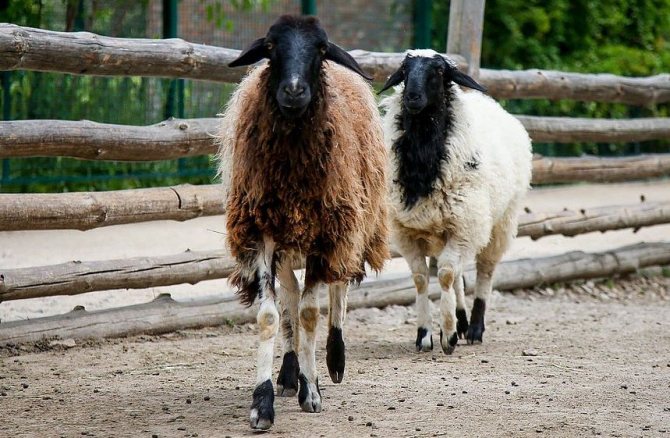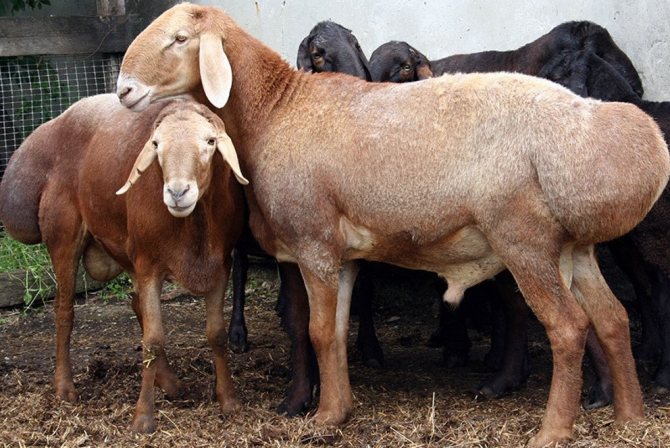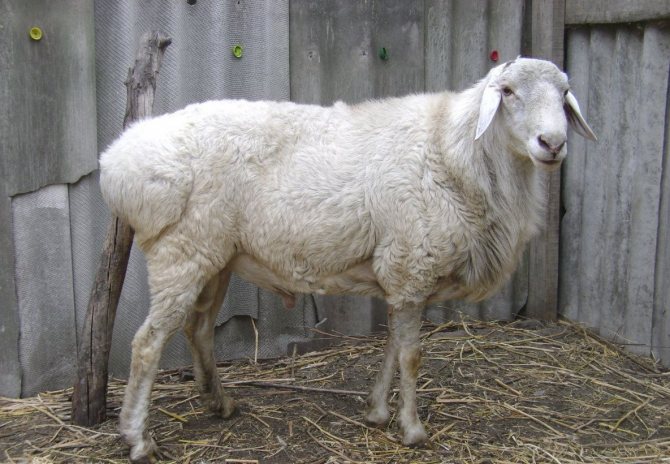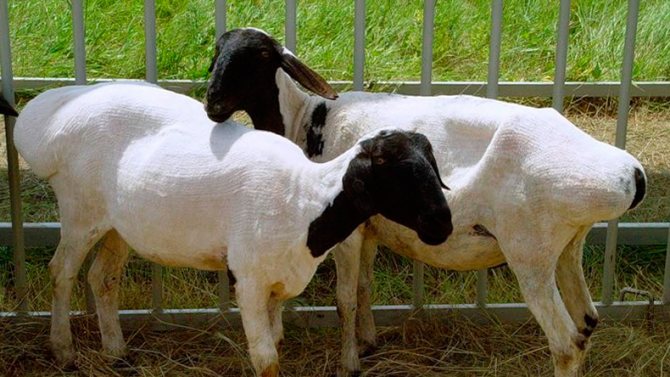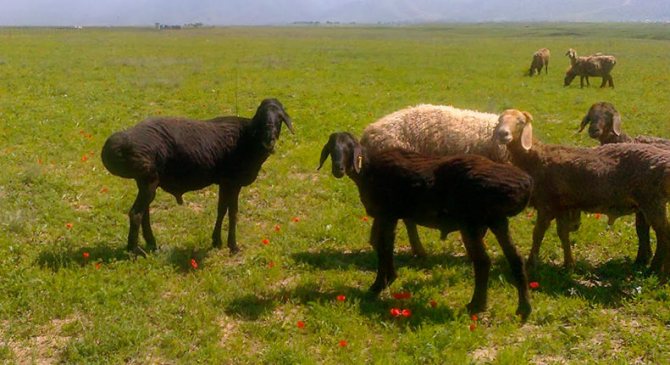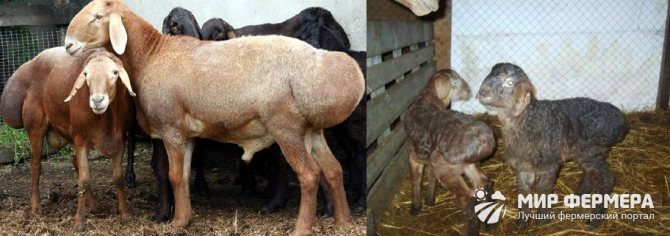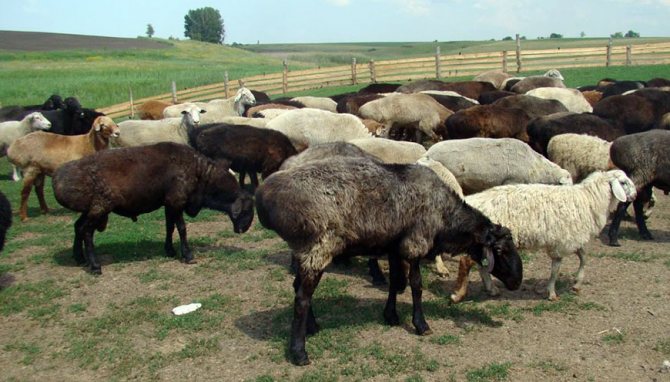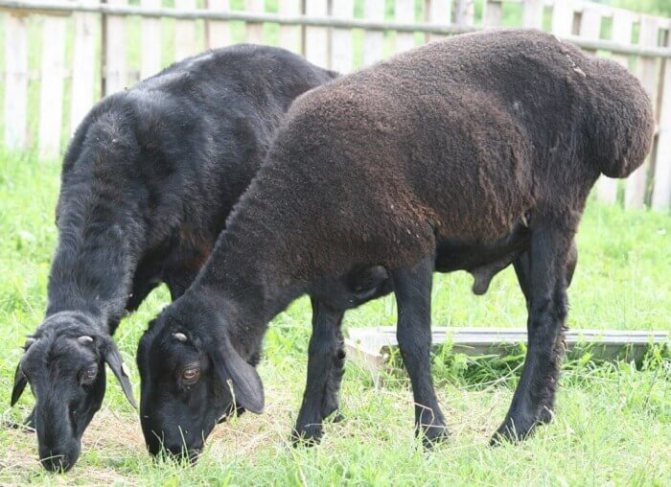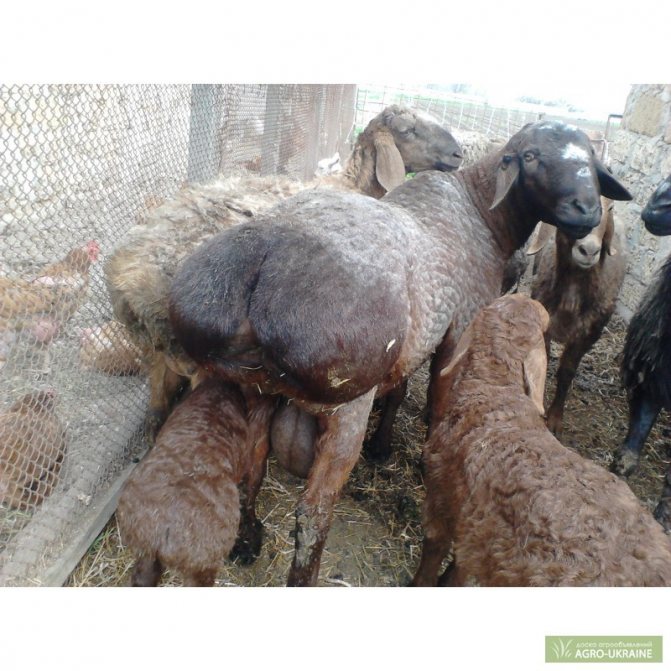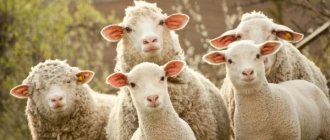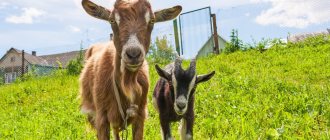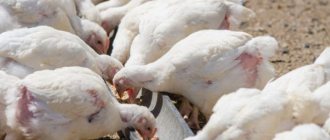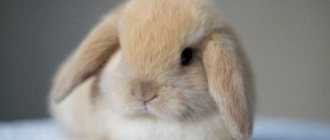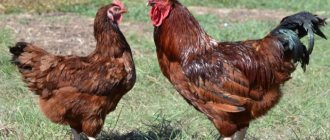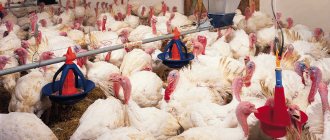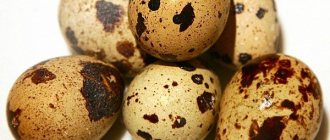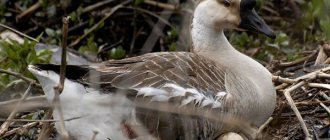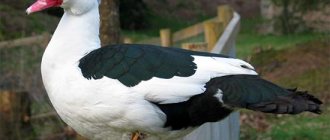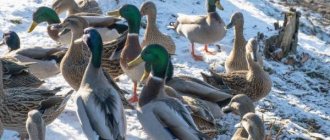The fat-tailed sheep breed is widespread both in the southern Russian regions and in the Kazakh and Iranian steppes. It is no less popular in North African countries, as well as in Afghanistan and Pakistan. Their wool is not as soft and thin as that of fine-wool sheep, it is harsher and coarser to the touch.
They are classified as animals that provide meat and lard (fat tail or fat tail fat). The fat tail is on the sheep's rump. The more well-fed and healthier the animal is, the greater the proportion of fat tail fat. Sometimes its weight fluctuates within twenty kilograms, and most often five to ten kilograms. Much depends on the nutrition and conditions of the animal.
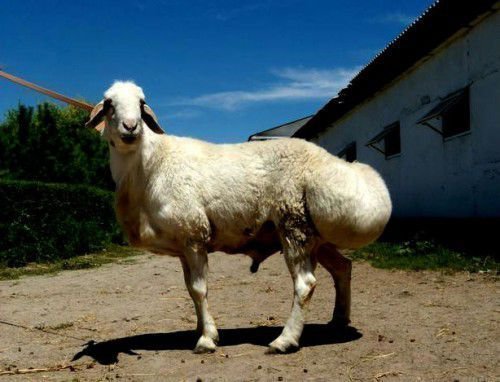
Fat tail ram
Fat tail breeds
Fat-tailed sheep breeds are distinguished by their characteristic of fat accumulation. Most of it accumulates in the area of the lower part of the spine, in the common people it is called a fat tail. Accumulation of fat looks like a camel's hump and serves as a reserve food when the amount of food decreases on the steppe pastures.
It contains everything you need for life in the steppe:
- vitamins;
- trace elements;
- water.
Fat deposits in each breed of ram are located differently:
- in the form of 2 round balls at the bottom of the tail;
- greasy formations resembling hanging pillows;
- enveloping the tail, with a compacted lump of fat sticking up;
- oval large fat tail, which prevent the ram from walking, you have to tie it up.
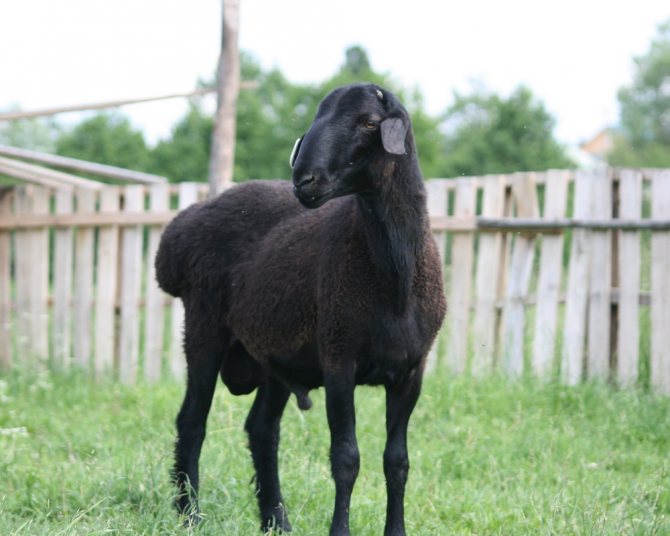

Fat tail ram
The peculiarity of fat tail fat is in its ability not to solidify at a temperature of 18-22 degrees Celsius, in addition, it is an excellent preservative. If fresh meat is greased with fat from a fat tail, it will last a long time in hot climates.
Reference. If an adult eats well, then a mutton fat tail weighs more than 25 kg.
Anatomically, fat-tailed breeds are not at all like ordinary sheep, they have:
- horns are missing on the small head;
- ears - long, drooping;
- the woolen fleece is uniformly colored;
- the muscular frame is held firmly on long, strong legs;
- tail - small, covered with hair.
On sheep farms, they are increasingly replacing ordinary sheep with fat-tailed ones.
Sheep life in a flock
Sheep are very dull animals. They often cannot cope with the simplest tasks. For example, they may refuse to enter their corral if the gate is rearranged in it. Sheep do not have the hierarchy that cattle do. All individuals in the herd are practically equal. Animals do not have a permanent leader. By the will of man, his function is performed by goats, and in the southern territory of the country - by donkeys. Fat-tail rams always follow the leader obediently. It is very difficult to manage a flock without a leader, for example, in bad weather, to move from its place or to drive it into a corral. Sheep are afraid and do not like everything new. This quality is well reflected in the Russian folk proverb "He rested his horns like a ram against a new gate."
How much does a fat tail ram cost? The cost of live weight is from 150 rubles. for 1 kg.
Description of breeds
Lop-eared rabbit ram
Each variety of fat-tailed sheep has its own characteristics.
Kalmyk
Initially, the breed was bred in Mongolia and China.
When crossed with local rams, a new species was bred with the following indicators:
- male weight - 100-130 kg, bright - 70-80 kg;
- massive chest bone;
- limbs - long, sinewy;
- fat tail weighs about 20 kg;
- the annual production of the fleece is 4.5 kg;
- the color of the coat is white and black.
Very large breed, resistant to cold climates.
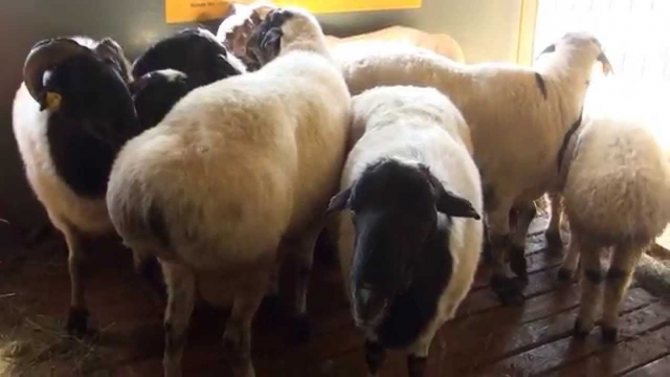

Kalmyk
Hissar
Breeding of the breed originated in Tajikistan, Uzbekistan.
In the Russian Federation, it is not popular due to the poor quality of wool and low body weight:
- the weight of an adult female is 80-85 kg;
- an adult male of the sebaceous breed weighs 190-200 kg;
- height - about 90 cm;
- very small head, with a humped nose;
- limbs - long and thin;
- wool - hard, rough;
- 2 kg are sheared during the year;
- suit - dark red.
Reference. This is the most massive variety of fat-tailed sheep, but it is impractical to raise them to an adult, their fleece is of poor quality, and the meat loses its tenderness after 5 months of age. Experts recommend raising Gissarok to this age.
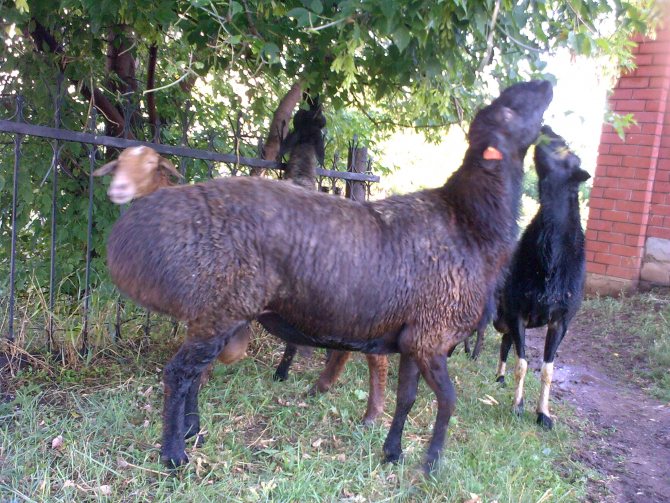

Hissar
Edilbaevskaya
A hardy breed, it has a large fat tail with valuable fat, gives a lot of fat milk and high quality wool, which is used for making carpets. Bred by crossing the Astrakhan breed with coarse wool and local rams. The result is a very robust, hardy and undemanding variety of sheep.
Description of the breed:
- the weight of an adult male is 120 kg, that of a female is 70 kg;
- individual growth - 85-90 cm;
- physique - dense, with a developed sternum;
- wool is sheared - 3.5 kg;
- annual milk yield - 130 liters;
- suit - black, there is a red color.
On a note. An early maturing breed, young animals grow up quickly and accumulate fat in the fat tail.
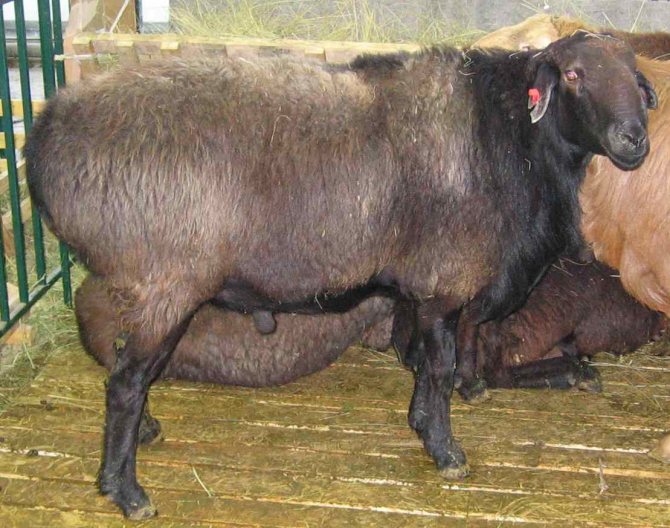

Edilbaevskaya
Saradzhinskaya
The Turkmen breed is distinguished by fertility and early puberty.
Characteristic:
- male weight - 75-80 kg, female - 40-50 kg;
- coat color - dark gray, legs and head - dark red;
- fleece - dense and thick with a lot of fluff;
- on the head of the male there are curved horns;
- withers - wide, sharp;
- framework with weak muscles;
- fat tail sack - about 8 kg.
The fat-tail ram of the Saraja breed is well adapted to the cool climate and limited nutrition.
Appearance
The appearance of fat-tailed sheep largely depends on the fatty bag, which takes different forms and is located in different parts. In some fat-tailed breeds, it is barely noticeable, while in others it is immediately evident. There are two forms of sheep fat tail:
- Ekze - a fatty bag, set high and not interfering with the movement of animals;
- Unjgur is a hanging bag in contact with the limbs and dangling during movement.
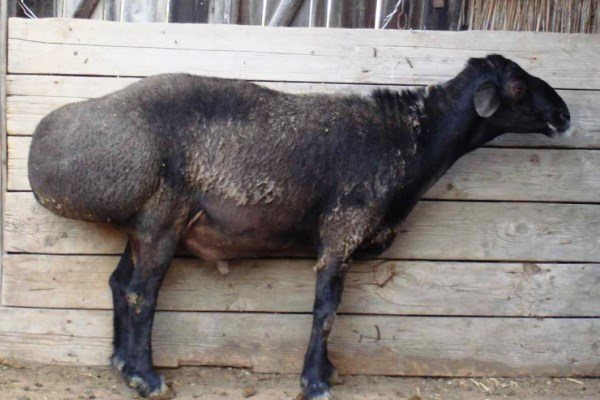

The size of the fat bag depends on both the specific breed and the degree of nutrition of the animal.
In addition to such an outstanding detail as a fat tail, fat tail sheep also have other nuances of physique, which made it easier for them to adapt to a nomadic lifestyle.
Table 1. Fat tail sheep: exterior
| Parameter | Description |
| Torso | Strong, stocky, with a broad chest |
| Head | Small, looks disproportionate in comparison with a large body. Horns in females are absent, in males they are small. Ears droop |
| Limbs | Long, muscular, but in comparison with the strong stretched body they look skinny |
| Tail | Hanging, stretches up to 10 centimeters in length |
| Color | Depends on the breed. There are light, red and dark brown variants |
| Wool | Rough, homogeneous |
| Height at the withers | Males reach 80 centimeters in height, females - 60 |
| Weight | The average weight of males is 120 kilograms, females - 80 |
Breed productivity
Sheep breeds
Varieties of fat-tailed breeds are of increasing interest among farmers, as unpretentious animals, with a maximum increase in body weight.
Their meat is nutritious and tasty.In young animals under 4 months of age, lamb is tender, juicy, completely without a specific smell, it is a recognized delicacy.
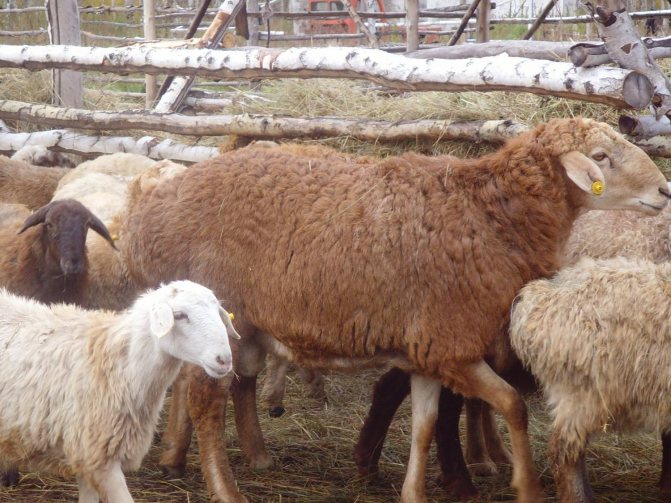

Saradzhinskaya
Sheep fat is used in cooking for traditional oriental dishes and in the food industry as a preservative. In medicine, it is used as a warming rub for colds and joint diseases.
High quality woolen fleece is used for making:
- fur products;
- sheepskin coats, collars, socks;
- blankets;
- carpets.
A lower quality woolen fleece is used for technical needs, for felting cloaks, felt boots and for other products.
Each breed of sheep has a different milk yield, but all of it is of high quality, with a high percentage of fat. By fermenting sheep milk, high-quality cheese products, feta cheese and butter are made.
Content
In addition to providing fat-tailed sheep with fertile pastures, it is necessary to take care of the presence of a sheepfold (a canopy is also acceptable, but it is not enough in the cold months). In order to prevent weakening of the immune system and lingering colds, it is advisable to maintain the temperature in the room at least nine degrees. In case of expectation of offspring, you need to increase it to sixteen to ensure the comfort of the ewes.
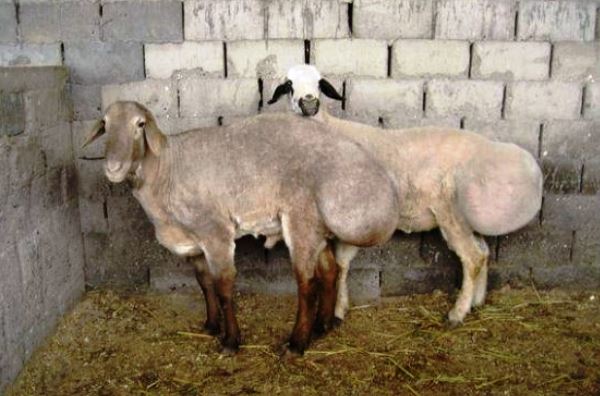

A dry and warm floor in sheepfolds is the necessary minimum of amenities that sheep cannot do without
To get rid of musty air and stuffiness, install a fan in the sheepfold.
Sheep addiction
One should take into account such a characteristic feature of fat-tailed sheep as fearfulness. These animals will never want to enter an unfamiliar sheepfold first, anticipating danger. Therefore, if you want to keep the sheep indoors, you must first guide them and act as a leader. When the sheep get used to the fact that the sheepfold does not carry any hidden threats, they will be able to freely enter and leave it.
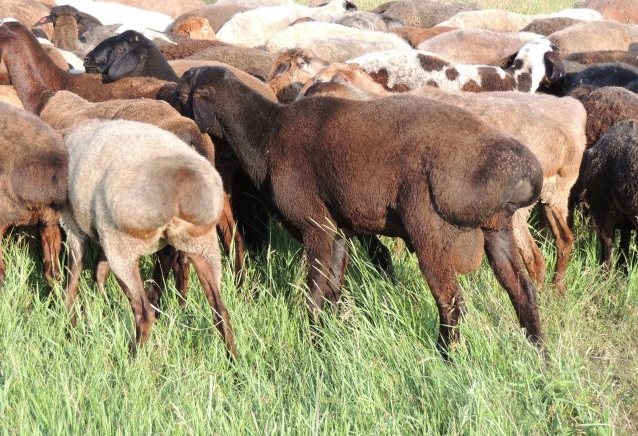

Be patient before teaching sheep to sheepfolds - these animals are very careful and distrustful
Sheep direction
Despite their survival skills, fat tail sheep are very easily disoriented. If one of these sheep strays from the flock, the likelihood that she will again go on his trail is small. Therefore, if you do not want to put up with a sudden decrease in the number of livestock, you need to control each grazing and count the animals upon completion.
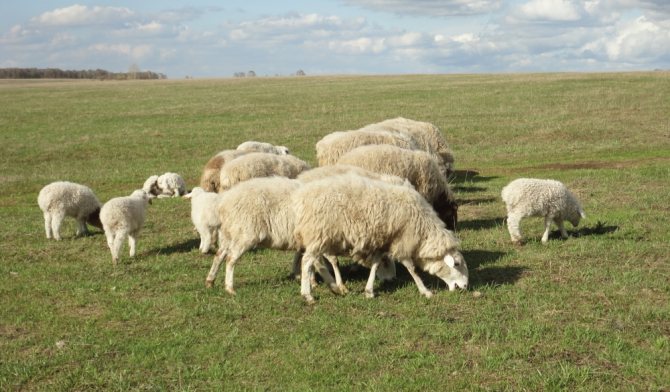

When grazing livestock, make sure that no sheep stray a long distance
Advantages and disadvantages
Hissar breed of sheep
Farms specializing in the cultivation of such sheep, note only their positive qualities, receiving from them high-quality and low-cost raw materials.
Breed advantages:
- feeds on growing steppe grass, does not require purchased food in summer;
- even with a small amount of grass, it gains weight quickly;
- hardy, capable of covering long distances if necessary;
- good productivity.
Disadvantages:
- she needs the supervision of a shepherd;
- unable to navigate the terrain, unable to find her way home herself.
Origin story
The first mentions of this breed of sheep date back to the third century BC. People living in the territory of present-day Central Asia were engaged in breeding fat-tailed animals. In the European part of the continent, there were no sheep that were able to supply not only meat, but also lard. In harsh conditions, fat-tailed rams could be found... Even if the animal was fed very poorly, drank a minimum amount of water, the representative of the breed still did not lose the ability to gain weight, since these traits were fixed at the genetic level.
Nomadic inhabitants preferred this breed because, in addition to a rich source of fat and meat, animals had another very important quality - endurance.Fat-tailed sheep are able to withstand multi-day transitions, practically not getting tired, they can live in conditions with large temperature drops.
Growing and breeding
Breeding and raising fat-tailed sheep is a highly profitable business in which the investment quickly pays off. A thoroughbred ram can fertilize an entire herd, so it is enough to keep 2-3 healthy adult males in the corral. In the absence of such, artificial insemination is used.
After fertilization, the lamb bears the fetus for about 5 months, with lambing, 1-4 lamb appear, which immediately:
- clear mucus from the nostrils;
- watered with milk.
Already on the second day after birth, the lambs begin to graze themselves and by six months gain 70% of the weight of an adult ram. The lamb stays with its mother for about 4 months, then it is taken to a common herd.
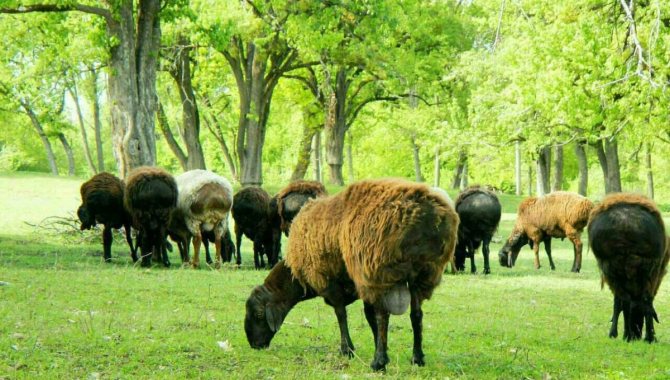

Growing and breeding
As soon as the lambs are weaned from the ewes, a herd is formed from them, while individuals with birth defects are discarded:
- teeth;
- hooves;
- deviations in the structure of the limbs;
- lethargic, weak lambs.
Conditions of detention
In summer, the flock needs a pasture and a fenced-in place to spend the night under the open sky, with a canopy to shelter from precipitation.
As soon as it gets colder outside, the animals are moved to an insulated room.
Animals get sick from dampness and draft, so the room must meet the necessary requirements:
- indoor air temperature - not lower than 5 degrees Celsius;
- good ventilation, otherwise the animals will suffocate from ammonia fumes;
- the floor is covered with dry sawdust or hay, change them daily;
- equipped with a trolley for a feeder with hay and compound feed;
- install drinkers for water, change water twice a day.
The room is cleaned daily, disinfection is carried out periodically.
Important! For ewes, a separate room is equipped, with an air temperature of at least 17 degrees Celsius.
Feeding
In the warm season, the herd feeds on the pasture; in the winter, the farmer must provide the flock with food.
The diet is divided into three parts:
- in the morning - solid food;
- in the daytime - balanced feed from concentrates;
- at night - dried grass.
As a vitamin supplement, animals are given a variety of hard, raw vegetables.
When switching to winter feeding, the sheep are given more water.
Important! Rotten hay, frozen vegetables, grass mown in the swamp lead to the death of animals. Sugar beet - diabetes.
Care
Animals have vulnerabilities - hooves. If you do not take care of them, a fungal disease develops - hoof rot. The hooves should be trimmed, cleaned and treated with an antifungal agent.
Animals are vaccinated in a timely manner.
Thick, warm wool is the best breeding ground for insects, so the sheep are bathed several times a year and the wool is disinfected.
The sheep are sheared twice a year.
Testimonials
- Oleg, 39 years old: “Fat-tailed sheep are probably one of the few breeds that can be kept at the same time with high-quality meat, lard and wool. I keep the animals in the pasture in the summer, in the evening I drive them into the barn, which I have specially equipped for them. I laid the plank floor, made room for mom and her newborn, installed drinkers and feeders. By the way, they are also picky about food. During the day they eat green food in the meadow, and in the evening I can give them boiled root crops or oats. In winter, I introduce concentrated feed into the diet. "
- Ksenia, 46 years old: “I have been keeping fat tail for 6 years. During this time, they never hurt me. I feed them oats, corn, green and concentrated feed. Most of all I value this breed for its meat. In young lambs, it is very juicy and tender. But in adults, it is already a little harsh. And although they are unpretentious animals, their room should always be dry and clean. The litter is changed every day, using straw for this.
Fat-tail sheep are a valuable breed of domestic animals, because thanks to them, you can get wool, meat, skin and lard at the same time. Their cost is not so high, despite the fact that the animals are in good health, are not particularly demanding to care for and have high productivity.

